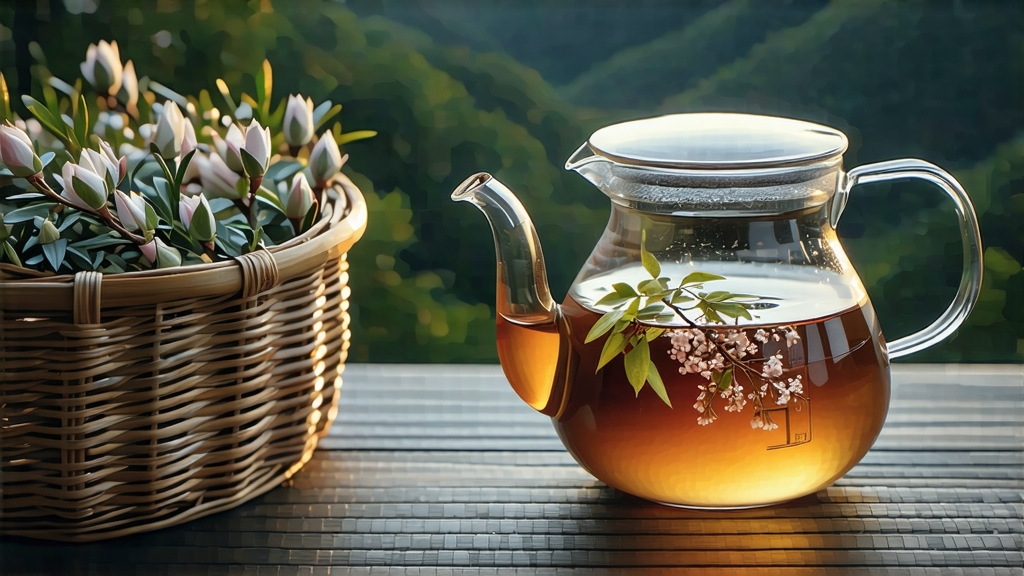
If green tea is the youthful burst of a spring meadow and pu-erh the wise elder telling stories of centuries, then white tea—especially the luminous Bai Hao Yin Zhen, literally “White-Haired Silver Needle”—is the quiet poet who arrives at dawn, speaks in whispers, and vanishes with the dew. Revered by Chinese tea lovers as the apex of minimalism, Silver Needle carries within its fuzzy, ivory-coloured buds the fragrance of mountain mist, the sweetness of ripe melon, and a history that glimmers like moonlight on a calm lake.
-
A Brief, Glittering Past
White tea’s documented journey begins in the Song dynasty (960-1279), when the imperial court demanded “tribute teas” pressed into exquisite cakes embossed with dragon and phoenix motifs. Yet the loose, unpressed Silver Needle we recognise today emerged much later, during the late Qing era in Fujian’s northeast. Local chronicles from 1796 speak of Fuding county villagers picking “big-white” tea trees (Da Bai Hao) in early spring, carefully stripping only the unopened buds. These buds, once withered and dried, flashed a silvery down that reminded scholars of frost on a pine branch—hence the romantic name. By 1857 the cultivar had migrated a few valleys north to Zhenghe county, and by 1891 Silver Needle was being loaded onto clipper ships at Fuzhou port, bound for Hong Kong, Singapore, and eventually Victorian London where it fetched prices higher than top-grade Keemun. Unlike many Chinese teas that suffered decline during the turbulent twentieth century, Silver Needle retained a niche clientele among overseas Chinese pharmacies; its cool, “non-heaty” nature made it the beverage of choice for nursing mothers and scholars burning midnight oil. -
Terroir: Two Counties, One Perfect Bud
Authentic Bai Hao Yin Zhen hails from only two protected geographical origins: Fuding and Zhenghe, both tucked into the Wuyi Mountain foothills where granitic soils, 1,200 mm annual rainfall, and a diurnal temperature swing of 10 °C coax the tea bush into storing extra amino acids. Fuding’s coastal air lends the finished tea a brighter, bamboo-sap aroma, while Zhenghe’s higher, mist-locked plateaus yield buds with a rounder, honeysuckle depth. Purists will debate which county rules supreme, yet connoisseurs agree that only the Da Bai Hao and Da Hao cultivars possess the genetic plumpness needed: buds at least 2.5 cm long, fat enough to stand upright in a glass when gently dropped—a simple but convincing authenticity test. -
Crafting Silence: the Art of Withering
Silver Needle’s processing is scandalously simple on paper—pick, wither, dry—yet maddeningly difficult in practice because every step is irreversible. Picking begins when the morning dew still clings; workers nip the bud with thumbnail, never twisting, to avoid bruising. A full kilo of finished tea demands 30,000 buds, all picked within the ten-day “qingming window” before Grain Rain. The buds are then spread on bamboo trays exactly 3 cm thick and wheeled into a sun-withering courtyard where they bask in diffused light, 22–26 °C, humidity 65 %. Every twenty minutes a master gently lifts and rotates the trays so each bud receives identical photonic baptism. Should the sun grow too fierce, reed mats unfurl like theatre curtains; should clouds gather, the trays are slid indoors where low-temperature charcoal kilns maintain airflow. This dance continues for 36–48 hours until moisture drops to 10 % and the buds curl slightly like sleeping shrimp. Finally comes a “foot-drying” pass at 40 °C for twenty minutes, just enough to lock in the enzymes without roasting. No pan-firing, no rolling, no kneading—only patience. The result is a tea that is 1 % manipulation and 99 % meditation. -
The Look, the Aroma, the Taste
A top-grade Silver Needle resembles a tiny ivory dart: straight, proud, and clad in a down so fine it floats on a gentle exhale. The liquor, when brewed at 85 °C, is not the expected pale nothing but